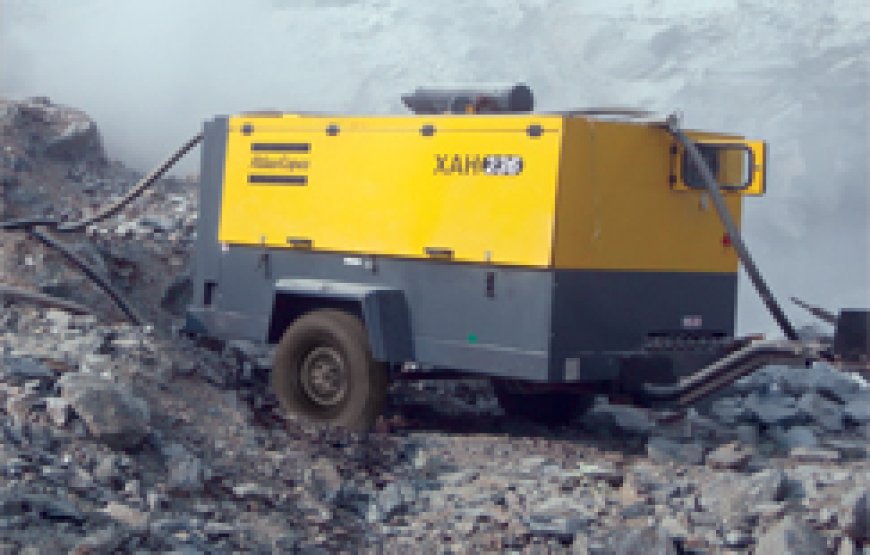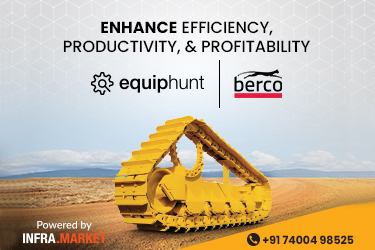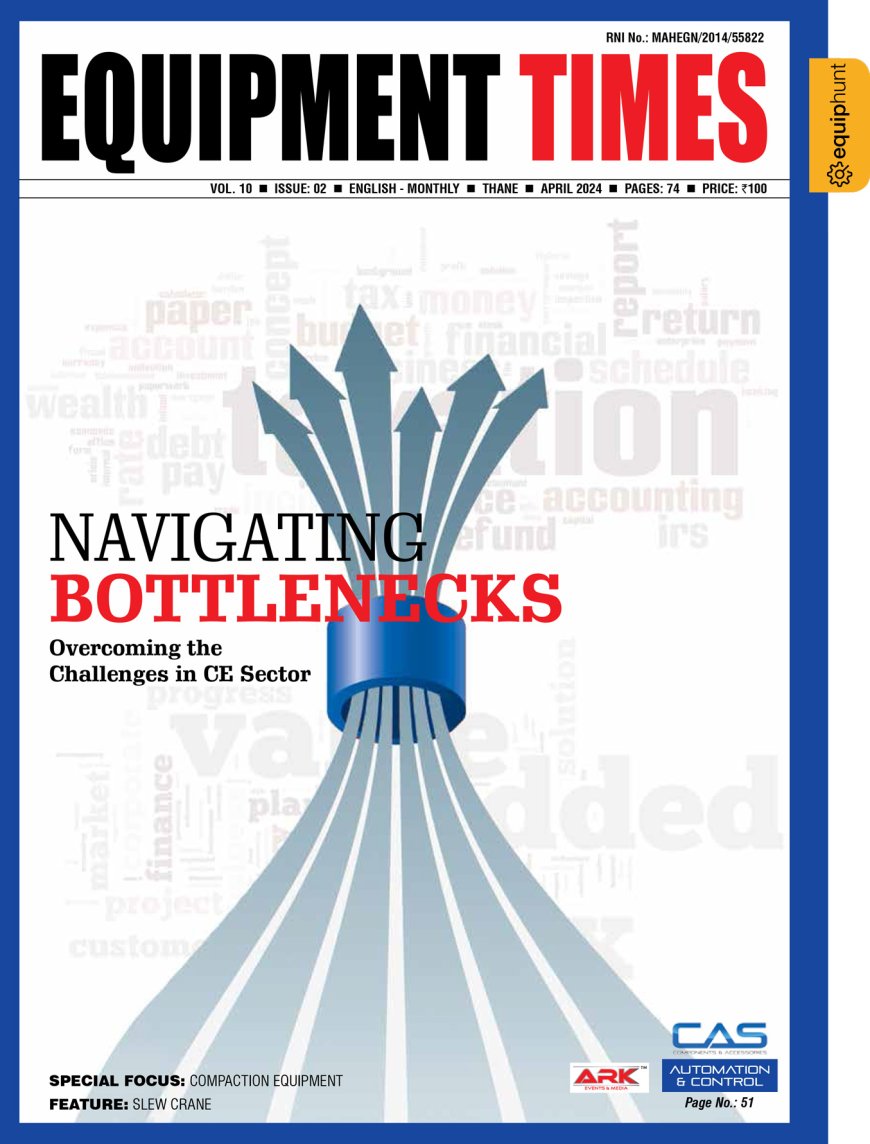“We continuously invest in designing equipment which consumes less energy.”
Nitin Lall General Manager, Atlas Copco India, Power Technique Customer Center We believe in consistently upgrading our product portfolio keeping in mind the product gaps. Atlas Copco invested in a Greenfield state-of-the-art factory four years back and has introduced advanced


Nitin Lall
General Manager,
Atlas Copco India, Power Technique Customer Center
We believe in consistently upgrading our product portfolio keeping in mind the product gaps.
Atlas Copco invested in a Greenfield state-of-the-art factory four years back and has introduced advanced manufacturing technology ensuring higher capacity, deploying the same resources. “The main goal is that we should be able to serve the market demand and need for the latest innovations in technology and on time deliveries on site,” states Nitin Lall, General Manager, Atlas Copco India, Power Technique Customer Centre. In an exclusive chat with EQUIPMENT TIMES, Lall speaks about the market trends in portable power systems.
What has been the market trend for portable compressor systems?
Looking at the increasing requirements for infrastructure development, most of the manufacturing units are either investing in expansion or companies like Atlas Copco are turning to more efficient methods of production thereby enabling increased manufacturing capacity within the existing resources. In fact, Atlas Copco has invested in a Greenfield state-of-the-art factory just four years back, wherein we have introduced the latest manufacturing technology which is ensuring a higher manufacturing capacity, deploying the same resources. The main goal is that we should be able to serve the market demand and need for the latest innovations in technology and on time deliveries on site.
Brief us on the portable compressor system portfolio, especially for surface mining and quarrying applications?
Atlas Copco offers several models such as the XA187, XAH236 and the XAT 197 for surface mining and quarrying applications. Specifically, the XAT197 with a 450 CFM @ 150 PSI is a value for money compressor with the best fuel economy when compared to other compressors in its class.
As market leaders, we believe in consistently upgrading our product portfolio keeping in mind the product gaps. Since early 2013, our studies showed that customers were facing a big cavity in terms of product offerings in the 450 CFM @ 150 PSI class of compressors in the mining segment. Today we have the XAT197 which is really a big surprise in a small package with the optimum CFM and pressure combination for this segment. With our commitment to sustainable productivity, we aim to serve customers with the right mix of products and be a complete solution provider.
Enlighten us on the technology trends in portable air compressor systems?
The new environment legislations to control pollution in India have ensured that states are now actively supporting stable grids. This has resulted in the total installed utility power capacity in the country increasing by 51 per cent and is still growing. With Atlas Copco electric compressors there is no fuel usage resulting in zero emissions while the hood type canopy of these compressors is designed to ensure silent operations on site, making them ideal for usage within city limits.
What is Atlas Copco’s role in the transition from traditional to more energy-efficient and environment-friendly systems?
We undertake a lot of field trials and invest more than a year of R&D before launching any products. A customer always sees the value he will get from the product he is buying. So, other than launching new products, technology advancements are always in our pipeline. In fact all our portable air compressors are most fuel efficient with its energy efficient powerful screw element design and have an advanced well designed acoustic canopy which makes operations sound proof. We continuously invest in designing equipment which consumes less energy while rendering higher output.
Emission norms are getting more stringent. What is the impact of this on power system suppliers like Atlas Copco?
With stricter emission norms, availability of electric power on site is now a must. With an increase in fuel cost and stricter emission norms there is a shift to usage of electric compressors on site. Equipped with the right ergonomics and inbuilt features to enhance performance, equipment such as Atlas Copco electric compressors offer 19 per cent faster drilling with 11 per cent less power consumption as compared with other compressors in its class.
What are the trends of air element design that helps improve fuel efficiency?
The heart of all Atlas Copco portable air compressors is new generation screw elements which are energy efficient and engineered to power the best. Take for example, the XRHS650 dual pressure model which eliminates more number of models by offering dual pressure selection in one compressor.
Strata with higher depths of drilling need more pressure, which can sometimes mean higher consumption of energy. If you go deep 20 bar from the first meter, you are actually burning extra diesel. That’s what customers don’t need—rather, they need that when you go shallow depths you do 17 bar pressure selection and when you go deeper you do 20 bar.
The XRHS650 compressor is the newest addition to LP range/medium air range for shallow water well drilling with features such as better fuel economy over drilling rate, less load on the engine due to advanced element design dual pressure selection option 38 per cent smaller foot print in the segment with smaller truck 36 per cent lighter than other compressors in its class 20 per cent faster and deeper drilling with small footprint. We are in fact the only manufacturer to provide 300 psi in this small foot print class, with the option of dual pressure with higher flow.
There is so much talk about disruptive technologies being introduced in every equipment vertical/service. What does the scenario look like in portable air compressor system space?
Digitalisation is the new buzzword and we at Atlas Copco focus on bringing in unmatched service with a strong digital footprint. We are complementing the traditional way of service engineers monitoring the health of the machine with advanced digital systems like Fleet Link. Fleet Link is a connectivity (telematics) solution which represents all relevant operational and service information of connected machines on the website and dashboards. It offers remote insights in the vital stats of our customers’ portable air compressors on site.
Further with the most modern engines in our compressors, we are ensuring we will be compliant with emissions norms as they get stricter over time. Atlas Copco also offers the legendary patented HardHat canopy cover. A shift from powder coated canopies to polyethylene canopy in our new LED HiLight V5+ light tower ensures we bring in new technologies and innovations to the customer, always.
What are the major challenges?
The challenge for manufacturers is to bring in new technology on a consistent basis. We as market leaders will launch advanced technology products to grow faster than the industry; for that, we will continuously innovate. Advanced technology and better productivity solutions will be the demand drivers in the future.
Please give us your road map for the year 2020?
India is showing a great potential to grow. Especially, when lots of work needs to be done in infrastructure, mining and other segments, the scenario is now taking a positive turn. We now foresee a bright future for all contractors in India. Whether small, medium or large scale contractors all will be active.
Right now, infrastructure is playing a key role for everyone. In general, there is an increased focus in this segment, driven by roads and partly from railways and metro rail as well. There is some action happening in every segment of infrastructure: flyovers, roads, sea links, and ports. I am bullish about the industry growing at 15-20 per cent in the next two to three years.
Hits: 31














